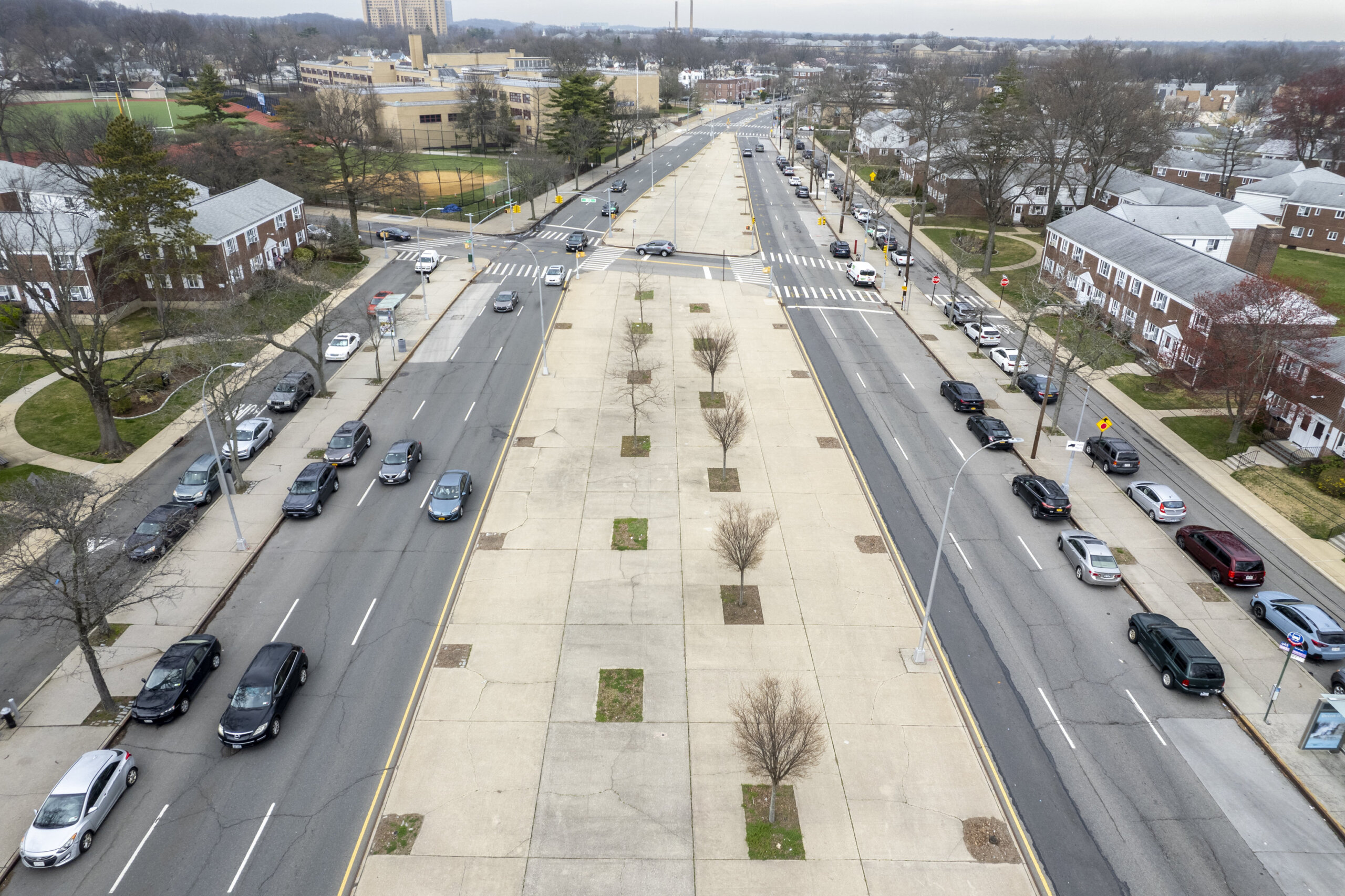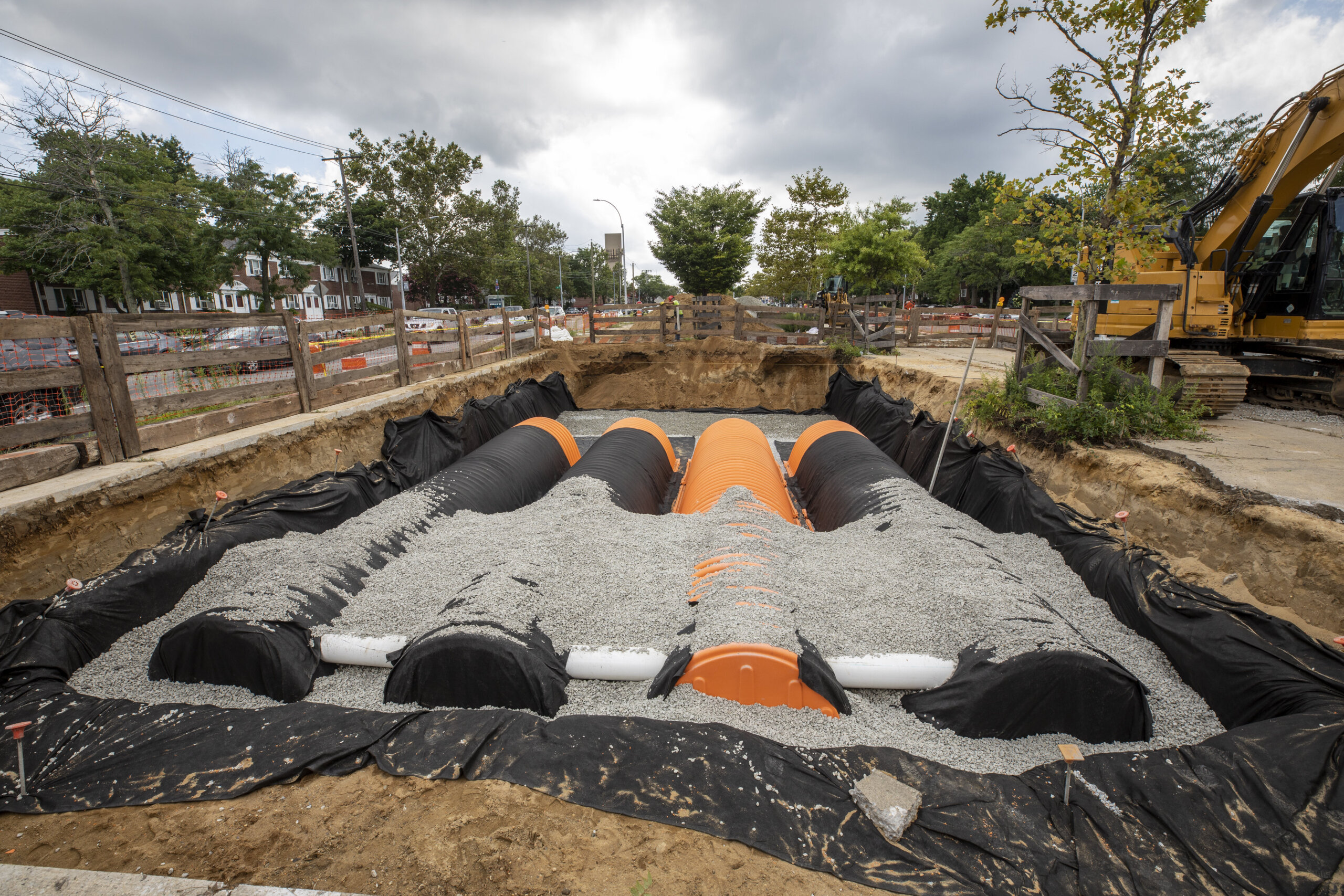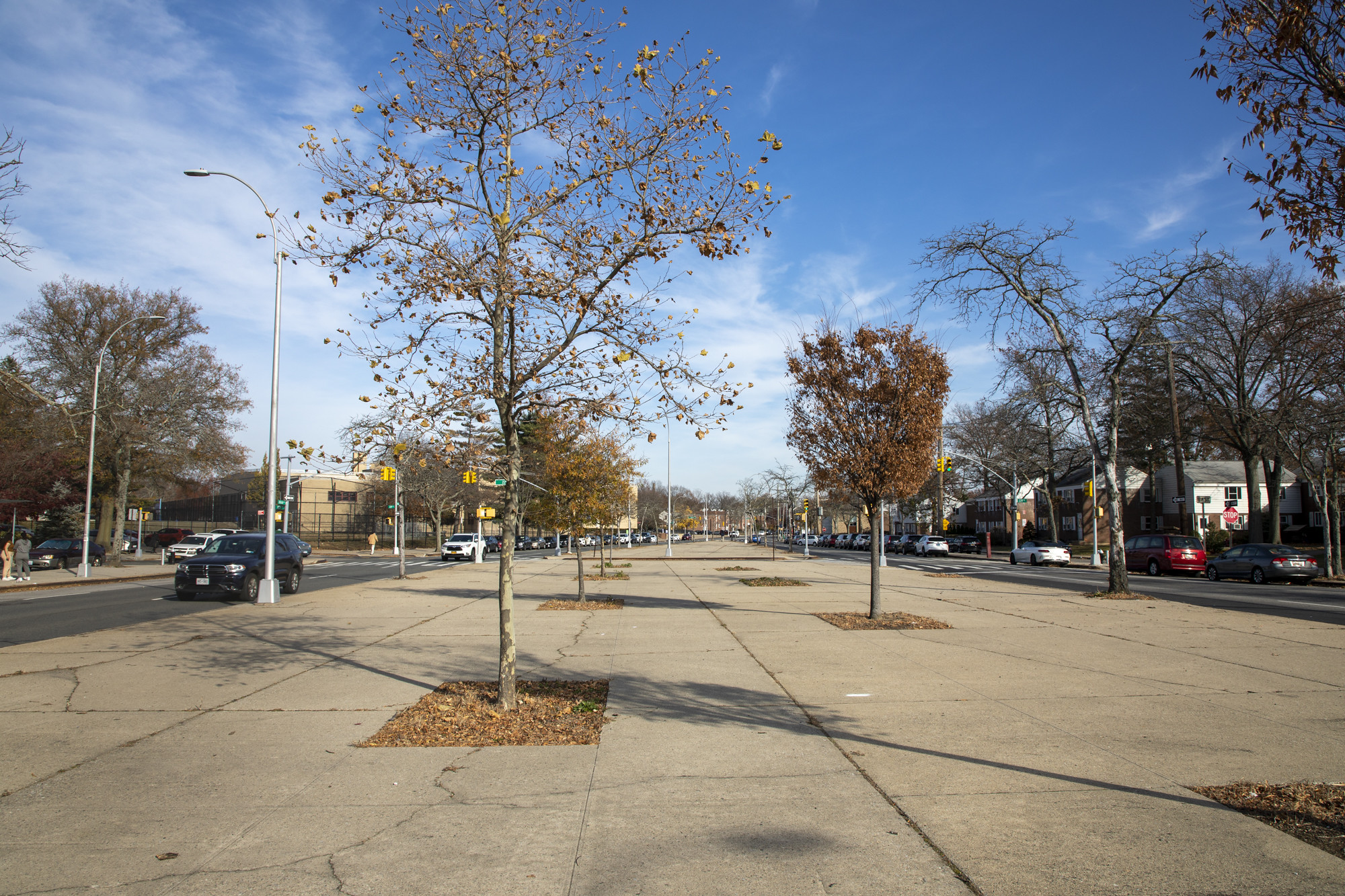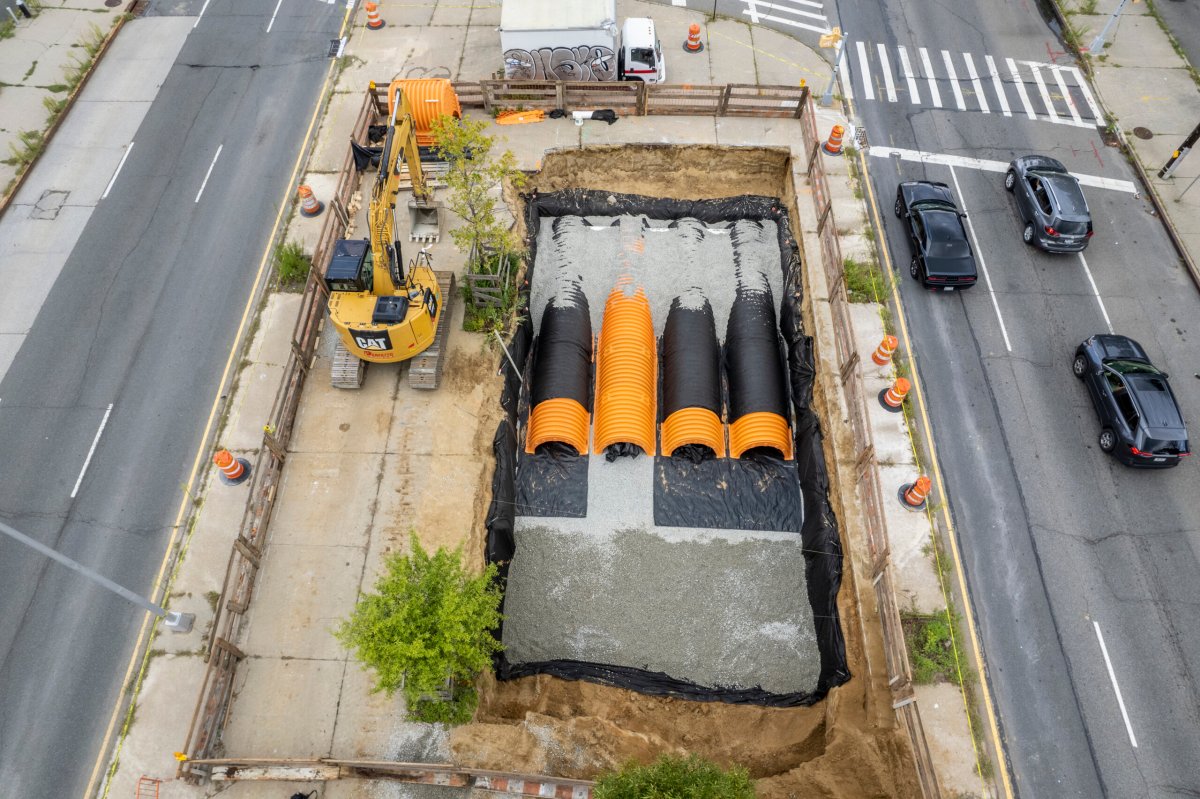The city has begun construction on a $3.9 million project that will transform seven large concrete medians in Queens Village into “green infrastructure sponges” that will absorb five million gallons of stormwater each year while reducing neighborhood flooding.
New York City Department of Environmental Protection (DEP) Commissioner Rohit Aggarwala announced on Oct. 18 that the green infrastructure medians will replace nearly three acres of what is currently impermeable concrete with subsurface drainage chambers and engineered rock and soil planted with ornamental grasses and perennial wildflowers, to mitigate flooding along Hillside Avenue and Winchester Boulevard in the vicinity of Martin Van Buren High School.

“Climate change is bringing us more intense rainstorms and in order to manage all that stormwater we must replace impermeable concrete and asphalt with soil and plantings that will absorb water,” Aggarwala said. “We will transform these large, little-used medians into resilient, hardworking green infrastructure that will manage more than 5 million gallons of stormwater every year.”
The construction is expected to take around 12 months and when finished the infrastructure sponges will create additional capacity in the neighborhood’s sewer system which will help to reduce local flooding and any sewer overflows into Jamaica Bay.

“As construction begins to mitigate stormwater flooding, the city is showing its commitment to prioritizing climate resiliency,” Council Member Linda Lee said. “Due to the burdens of our changing climate, residents in Queens Village, and parts of Eastern and Southeast Queens, have become highly susceptible to flooding. These measures to add almost 3 acres of green infrastructure and improve New York City’s flood mitigation efforts exemplify our City’s endeavors to prepare our neighborhoods for the harmful effects of severe weather. I am thankful for the leadership of Mayor Adams and the New York City Department of Environmental Protection, as the City begins work on this green initiative that will ultimately save lives in the process.”
Southeast Queens residents have been tormented by flooding for generations.
“We have recently seen how devastatingly damaging even a short rainfall can be to people, property and our neighborhoods,” state Sen. Leroy Comrie said. “Our city and state must do all we can to mitigate the hazards of climate change and I commend Commissioner Aggarwala and DEP for the impending work to replace impermeable concrete medians with plantings and trees that will provide natural drainage and help reduce flooding in Queens Village. Expanding and enhancing our resiliency tools in our local infrastructure is the right step towards improving our environment for all New Yorkers.”

Over the last several years DEP’s nation-leading green infrastructure program has constructed more than 11,000 green infrastructure installations including curbside rain gardens, green roofs, subsurface detention, permeable pavers, concrete and asphalt, and now green medians have been added to the City’s drainage toolbox. All of these green installations intercept stormwater before it can drain into the sewer system, thereby creating additional capacity to help reduce flooding and sewer overflows into local waterways.
State Sen. Toby Ann Stavisky said she was delighted to see concrete replaced by grass.
“These new green spaces will help alleviate the growing flooding issues our community faces while beautifying the neighborhood,” Stavisky said. I thank the Department of Environmental Protection for tackling this critical issue with such a creative and environmentally friendly approach.”



































